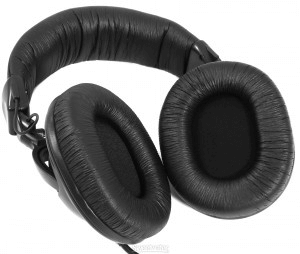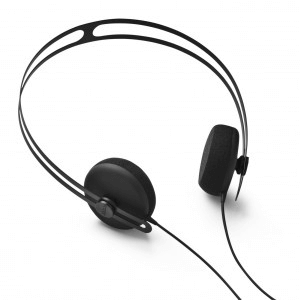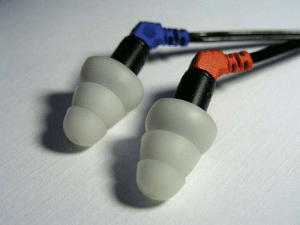With so many options on the streets today, picking the right headphone can be tough. It’s always best to figure out what your needs are first, then make a good decision. For instance, if you need some solid DJ headphones look for sturdy designs, isolating cups, and loud drivers. If you need something more portable, maybe and in-ear or smaller on-ear design would be best but may jeopardize sound quality. Long studio sessions? Try an open ear design, so your ears get a more nat3ural sound and less fatigue. All these factors come in to play, so do your research before you buy and make sure you get what you expect in your purchase.
Here is some general info that should help you along the way (taken from wikipedia.org)…
Common Headphone Styles
Circumaural
Circumaural headphones (also called full size headphones) have circular or ellipsoid earpads that encompass the ears. Because they completely surround the ear, circumaural headphones can be designed to fully seal against the head to bock out outside noise. Because of their size, circumaural headphones can be heavy and there are some sets which weigh over 500 grams (1 lb). Ergonomic headband and earpad design is required to reduce discomfort resulting from weight.

Supra-aural
Supra-aural headphones have pads that sit on top of the ears, rather than around them. They were commonly bundled with personal stereos during the 1980s. This type of headphone generally tends to be smaller and lighter than circumaural headphones, resulting in less attenuation of outside noise.

Open or closed back
Circumaural and supra-aural headphones can both also be further differentiated by the type of earcups:
Closed-back (or sealed) styles have the back of the earcups closed. These are standard in headphones designed for DJ’ing, as well as most consumer models. Depending on the exact one, they may block 8-32db of ambient noise, but have a smaller soundscape giving you the perception that the sound is coming from within their head as sounds reflected back towards the ear.
Open-back headphones have the back of the earcups open. This leaks more sound out of the headphone and also lets more ambient sounds into the headphone, but gives a more natural or speaker-like sound and more spacious “soundscape” – the perception of distance from the source.
Ear-fitting headphones
Earbuds

Among audio professionals, earbuds and earphones refer to very small headphones that are fitted directly in the outer ear, facing but not inserted in the ear canal; they have no band or other arrangement to fit over the head. (However, many consumer-quality in-ear-canal systems are also called earbuds by their manufacturers.) The outer-ear earphones are portable and convenient, but many people consider them to be uncomfortable and prone to falling out. Various models are available, starting at very low prices. They provide hardly any acoustic isolation and leave room for ambient noise to seep in; users may turn up the volume dangerously high to compensate, at the risk of causing hearing loss. From about 1990 earbuds have commonly been bundled with personal music devices.
In-ear headphones
In-ear headphones, like earbuds, are small and without headband, but are inserted in the ear canal itself. They are sometimes known as canalphones. Price and quality range from relatively inexpensive to very high; the better ones are called in-ear monitors (IEMs) and are used by audio engineers and musicians as well as audiophiles.
Canalphones offer portability similar to earbuds, block out much environmental noise by obstructing the ear canals, and are far less prone to falling out. When used for casual portable use they block out sounds which can be important for safety (e.g., approaching vehicles).
- Universal canalphones provide one or more stock silicone rubber, elastomer, or foam sleeves to fit various ear canals, for correct placement and best noise isolation.
- Custom canalphones are fitted to the ears of the individual user: castings of the ear canals are made, and the manufacturer uses the castings to create custom-molded silicone rubber or elastomer plugs that provide added comfort and noise isolation.[8] Because of the individualized labor involved, custom IEMs are more expensive than universal IEMs; resale value is very low as they are unlikely to fit other people.

Understanding the Specs
Impedance
Headphones are available with low or high impedance measured at 1 kHz. Low-impedance headphones are in the range 75 to 150 ohms and high-impedance headphones are about 600 ohms.High impedance headphones have been popular among tube amplifier aficionados,[citation needed] and in classroom or studio situations requiring many headphones connected in parallel to the same source. Low impedance headphones yield a louder sound from a standard headphone jack, and require less voltage to achieve a target sound pressure level—an important consideration for portable electronics.
Sensitivity
Sensitivity is a measure of a transducer’s output when driven with a specific reference input. Headphone manufacturers often loosely use the term “efficiency” where sensitivity should be used. Headphone efficiency (power in/power out) is a type of sensitivity, but efficiency is usually not an important characteristic to measure for headphones (see Efficiency vs Sensitivity).
Common “units” for headphone sensitivity are “dB/mW” and “dB/mV”.[5] These are dB SPL (sound pressure level) measured in a standard ear for a 1 kHz sinusoidal headphone input of either 1 milliwatt or one millivolt. A more complete notation would be “dB ref. 20μPa/mW” or “dB ref. 20μPa/mV”. One can convert between these two references if the impedance is known.



